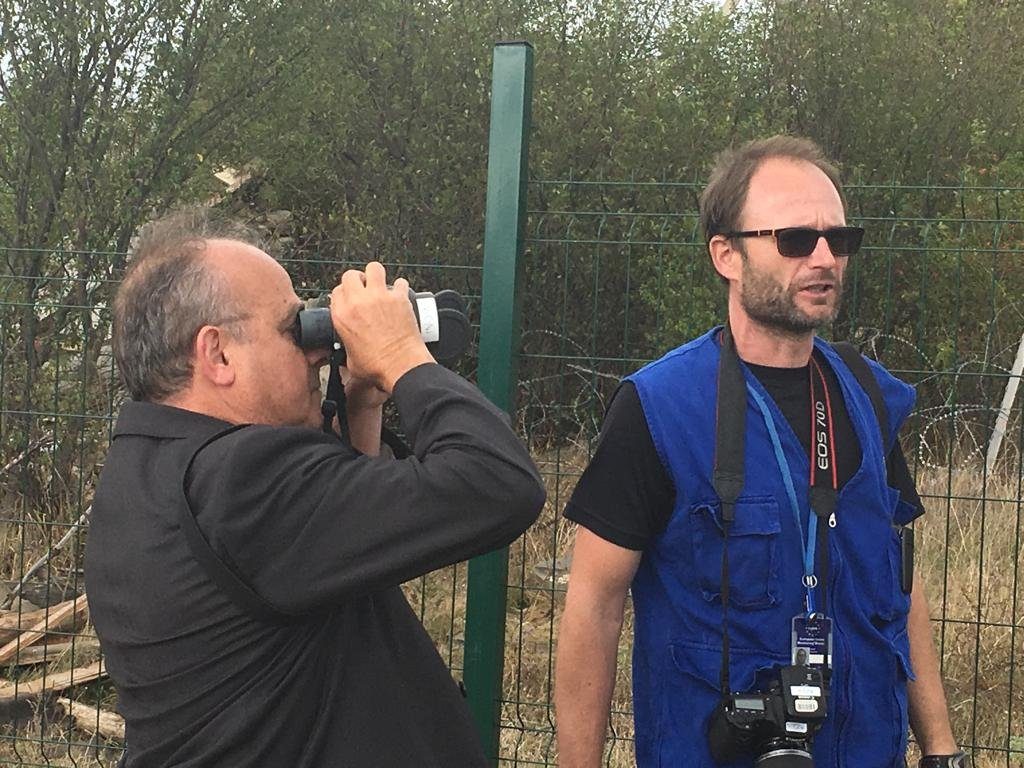Jean-Christophe Belliard, the Deputy Secretary-General at the European External Action Service, joined European Union Monitoring Mission (EUMM) patrol to Gugutiantkari village of Gori Municipality, at the edge of Russia-occupied Tskhinvali region/South Ossetia on September 8, to observe the process of “borderization”.
Belliard reiterated the EU support for the territorial integrity and sovereignty of Georgia within its internationally recognized borders. He also stated that the EU “does not recognize the constitutional and legal framework” of “presidential runoff” in occupied Abkhazia.
“The European Union remains actively engaged and involved in stabilization and conflict resolution efforts in Georgia, including by continuing its engagements as co-chair in the Geneva International Discussions, the efforts of the EU Special Representative, and the continued presence on the ground of the EU Monitoring Mission,” he stated.
The European Union Delegation to Georgia in agreement with EU Heads of Mission stated on August 20 that “the erection of fences” by the Moscow-backed officials of Tskhinvali Region/South Ossetia in the vicinity of Gugutiantkari village “hinders freedom of movement and will deprive people from the local area from accessing orchards and water resources.”
Erik Høeg, head of the EU Monitoring Mission (EUMM) in Georgia noted in his tweet that the Deputy Secretary General was briefed today on the situation in Chorchana-Tsnelisi area. Høeg added that Jean-Christophe Belliard was updated on the use of hotline and Incident Prevention and Response Mechanism (IPRM) mechanisms to “urge parties for maximum restraint and to de-escalate situation.”
Along with fencing in Gugutiantkari village, Chochana-Tsnelisi area on the South-Western edge of occupied Tskhinvali Region/South Ossetia became another hotspot in the conflict zone. On August 24, Tbilisi started construction of a Georgian police checkpoint between the Chorchana village in Tbilisi-controlled Khashuri Municipality and Tsnelisi village controlled by occupied Tskhinvali Region.
Protesting the construction, Tskhinvali representatives have disrupted the Incident Prevention and Response Mechanism (IPRM) meeting in the village of Ergneti on 29 August, demanding from Tbilisi to remove the checkpoint. However, officials from Tbilisi unanimously said the Georgian police checkpoint would not be dismantled.
In response, Tskhinvali KGB announced on September 5 that Tit-for-Tat border marking procedures were initiated and that “border service” crew has started works to “mark the border” on the height 944.8, on Tbilisi-controlled territory that is approximately kilometer westwards from the occupied Tsnelisi village.
Earlier on September 5, in its statement delivered at the OSCE Permanent Council Meeting, the European Union reiterated the its firm support for the sovereignty and territorial integrity of Georgia within its internationally recognized borders and called on Russia to fulfill its obligations under August 12, 2008 ceasefire agreement. The EU statement reads that recent developments along the dividing line “have negatively affected the overall security situation.
The statement also reads the European Union is “actively engaged with the recent highly concerning occurences in the Gugutiantkari and Chorchana/Tsnelisi areas. The EU also called for the EUMM access on the whole territory of Georgia, including Abkhazia and Tskhinvali Region/South Ossetia.”
This post is also available in: ქართული (Georgian) Русский (Russian)

